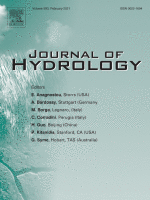
Reliable estimates of low flow are extremely important for the monsoonal mountainous areas of the Hindu Kush–Himalayan (HKH) region as people in this region are facing growing problems of water during dry periods in terms of both quality and quantity. Furthermore, increasing evidence of decrease in snow cover and retreat of glaciers due to global warming have been reported from various parts of the HKH, which has serious implications for low flow in the region. However, reliable methods for low flow are difficult to find and lack of hydrometeorological data have inhibited the development of such methods. This has posed serious problems for sustainable management of water resources systems in the region in view of the difficulties in low flow. This paper also discusses a method for low flow estimation in the mountainous regions of Nepal, which shares with other neighbouring areas the complexity in the nature of the terrain and climate, inadequate hydro-meteorological network and insufficient long-term reliable data on hydrometeorology. The method discussed is based on a method developed in the UK, for estimating the hydrological regime at ungauged sites. Regionalization of the flow has been developed applying multi-variate regression analysis of long-term hydro-meteorological data and catchment characteristics. A number of standardised flow duration type curves have been determined, and regression models of the flows and the topographical and geological characteristics of the catchments were established. The mean flow was estimated using the water balance principle where the long-term mean annual runoff is the difference between long-term average annual precipitation and long-term actual evapotranspiration. Regionalization has been carried out by developing grids of hydrological response. The grids allow the flow regime to be estimated at any point on any stream in the mountainous region of the country. This is the first regional method of this kind to be developed to estimate low flows from ungauged catchments in Nepal. Such a method is of great importance for Nepal as well as for the mountainous regions of other countries of the HKH region, as it allows assessment of water availability for the design of small hydropower, irrigation and water supply schemes, and contributes to the economic development and poverty alleviation.